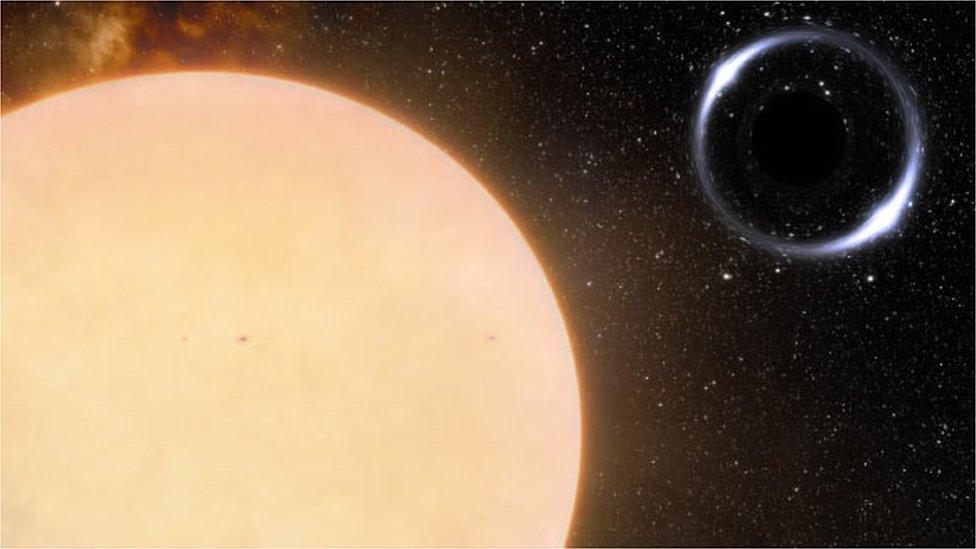Black holes: New discovery three times closer to Earth
- Published
- comments

This artwork shows what they think the black hole looks like
Astronomers have discovered that there is a black hole much closer to Earth than we previously thought!
It's been named Gaia BH1 after the Gaia spacecraft that found it.
It's around 1,500 light years away from Earth, which is three times closer than the next closest one.
Scientists think there are hundreds of thousands of black holes in the milky way - but they're very difficult to spot.
The universe is home to many black holes - but they're very hard to spot!
What is a black hole?
Black holes happen at the end of the life cycle of a star.
When some stars die, because they are so huge, their weight and pressure causes them to collapse in on themselves.
They have the ability to suck in anything - including stars and planets.
Because of this they also suck in light, which makes them very difficult to spot.
It's impossible to physically see a black hole with a space telescope, because they lack any light.
Sagittarius A* - the black hole at the centre of the milky way - was photographed by scientists to get this image
How do you find a black hole?
We know that there are lots of stars in the universe not because we have seen them, but because of how other things in the universe interact around them.
So although we can't physically see a black hole, we can look at all the light around it to work out where it could be.
Imagine it like a magnet under a piece of paper. From above the paper you can't see the magnet, but you can see things pulled towards it to work out where it is.
Black holes can suck in stars, warping the light around them
Could we be sucked into a black hole?
Technically we could be, but the closest black hole to us is over 1,500 light years away.
Light years is the measurement astronomers use to judge how far away things are in space - because the universe is so huge it doesn't make sense to use normal numbers.
A light year is a measurement of how far light travels in one earth year.
Just one light year is around nine trillion kilometres - so at 1,500 light years away, you don't need to worry about Gaia BH1 getting to us any time soon!
Luckily we can 'view' black holes from a safe distance and learn fascinating things about the universe from them.
- Published2 May 2023
